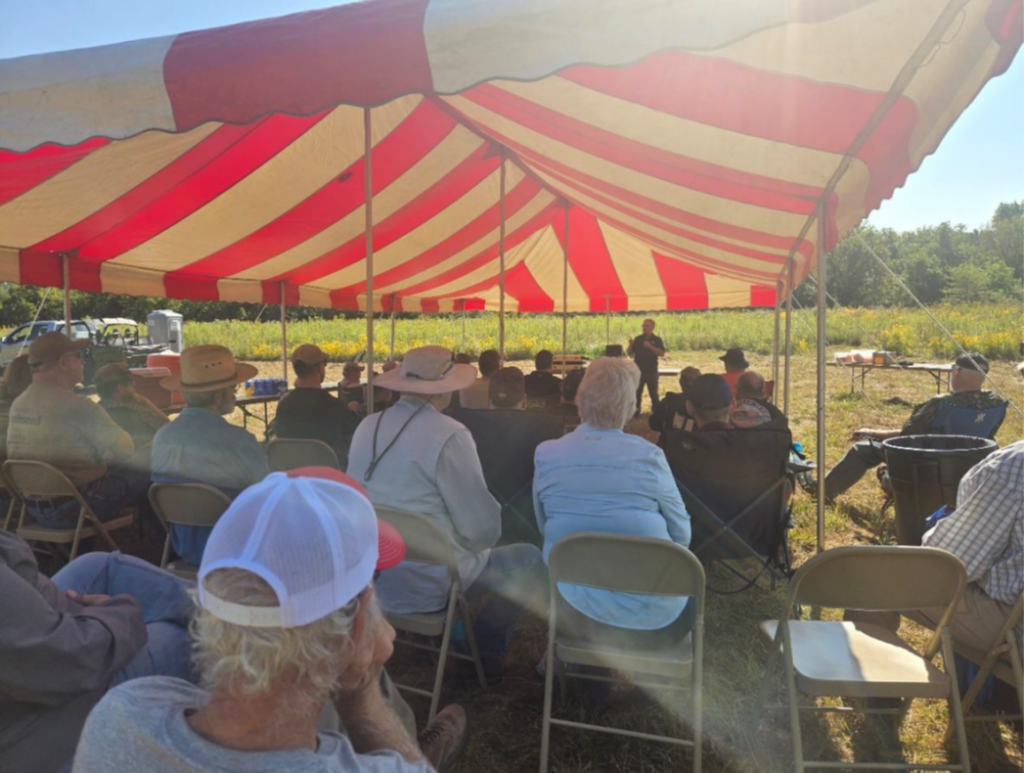Landowners See Turkey Habitat Come to Life at Missouri Workshop
EDGEFIELD, S.C. — On the first weekend in September, more than 30 landowners gathered in Crawford County, Missouri, with one shared goal — learning how to create better habitat for wild turkeys.
Hosted at the farm of Joe Heller, the workshop was part of the Missouri Department of Conservation’s Turkey Habitat Initiative and was co-hosted with the National Wild Turkey Federation. This workshop was the last “turkey nesting and brood rearing habitat” workshop offered as a part of the Turkey Habitat Initiative, and it fittingly drew the largest crowd yet of the workshops offered.
Attendees didn’t just sit through presentations — they walked the land and saw management practices in action. From established native grass and forb fields to thinned woodlands and areas treated with prescribed fire, participants witnessed firsthand how intentional land management supports turkey nesting and brood-rearing success.

“In the fairly recent down years of 2017-2021 when turkey harvest rates and associated hunter satisfaction ratings were both tanking, folks were getting very vocal that something must be done,” said John Burk, NWTF district biologist for Iowa, Illinois and Missouri. “The data is pretty clear that poor poult survival is the boogeyman of turkey population declines, and increasing available high-quality nesting habitat in close proximity to quality early brood-rearing habitat is the most effective way to keep that boogeyman at bay. The challenge is that too many folks don’t know what quality nesting and brood-rearing habitat is or how to create and maintain it. Like many things, you have to recognize the problem before you can effectively address it. The Turkey Habitat Initiative, in general, and these workshops are the MDC and the NWTF doing something about the turkey decline. We will continue to beat the habitat drum because as more folks hear it, believe it and implement it, our turkeys will respond, and the demand to do things that won’t work will subside.”
In addition to learning about turkey nesting ecology and habitat requirements, participants explored the role of native vegetation, the importance of thinning and burning woodlands, and strategies to boost brood survival. Resource professionals from MDC, NWTF, USDA Natural Resources Conservation Service and Quail Forever shared technical expertise, answered questions and explained how landowners can tap into state and federal cost-share programs to make habitat improvements more attainable.
Heller, whose property served as the living classroom, spoke openly about his own journey in habitat management and the rewards of seeing more turkeys and other wildlife benefit from his efforts.
Learn more about Missouri’s Turkey Habitat Initiative and upcoming landowner workshops.
About the National Wild Turkey Federation
Since 1973, the National Wild Turkey Federation has invested over half a billion dollars into wildlife conservation and has positively impacted over 24 million acres of critical wildlife habitat. The NWTF has also invested over $10 million into wild turkey research to guide the management of the wild turkey population and to ensure sustainable populations into perpetuity. The organization continues to deliver its mission by working across boundaries on a landscape scale through its Four Shared Values: clean and abundant water, healthy forests and wildlife habitat, resilient communities, and robust recreational opportunities. With the help of its dedicated members, partners and staff, the NWTF continues its work to provide Healthy Habitats. and Healthy Harvests. for future generations.
